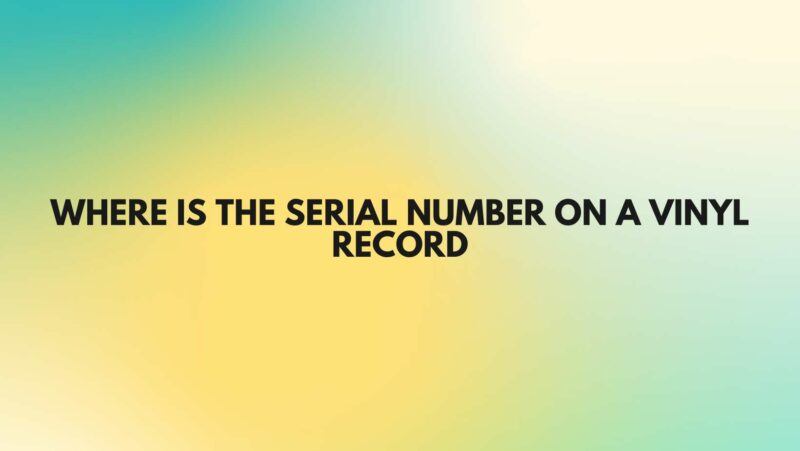Vinyl records have been a cherished medium for music enthusiasts and collectors for decades. These analog treasures often contain valuable information embedded in their grooves, including catalog numbers, pressing details, and serial numbers. While the catalog number helps identify the release, the serial number can provide additional insights into the record’s history. In this comprehensive guide, we will explore where to find the serial number on a vinyl record and the significance of this often-overlooked detail.
- Understanding the Serial Number
A vinyl record’s serial number, also known as the matrix number or runout etching, is a unique combination of letters and numbers that is typically etched or stamped into the runout groove area of the record. This serial number is specific to each individual pressing and can offer valuable information about the record’s production.
- Locating the Serial Number
To find the serial number on a vinyl record, follow these steps:
- Remove the Record from the Sleeve: Carefully slide the record out of its protective sleeve to access the vinyl surface.
- Examine the Runout Groove: Flip the record over to the side with the grooves. The runout groove is the area located closest to the center spindle hole. It’s usually a blank or ungrooved section, and the serial number is often etched or stamped here.
- Use Proper Lighting: Adequate lighting is essential for reading the serial number. Angle the record under a good source of light to make the etchings or stampings more visible.
- Deciphering the Serial Number
The format of the serial number can vary depending on the pressing plant, record label, and time period. Here’s what to look for when deciphering the serial number:
- Alphanumeric Characters: Most serial numbers consist of a combination of letters and numbers. These characters may include initials of the mastering engineer, the pressing plant’s code, and other identifiers.
- Date Codes: Some serial numbers may include date codes that indicate when the record was pressed. These date codes can vary widely, so you may need to research the specific code used by the pressing plant or label.
- Pressing Plant Codes: Many pressing plants had unique codes associated with them. Researching these plant codes can provide insights into where the record was manufactured.
- Mastering Engineer Initials: Occasionally, the initials of the mastering engineer involved in the record’s production may be included in the serial number.
- Significance of the Serial Number
The serial number on a vinyl record serves several purposes:
- Identification: It distinguishes one pressing of the record from another. This is especially important for collectors interested in specific pressings or variations.
- Quality Control: The serial number can help ensure quality control during the manufacturing process. Records with defects or flaws could be traced back to specific pressings.
- Historical Context: Serial numbers can offer valuable historical context, such as the era in which the record was produced and the technology used.
- Collectibility: Certain serial numbers or pressings may be highly sought after by collectors, adding to the record’s collectibility and value.
Conclusion
The serial number on a vinyl record is a hidden gem that can provide valuable insights into the record’s production history, pressing plant, and historical context. By following the steps outlined in this comprehensive guide and taking the time to decipher the serial number, you can uncover fascinating details about your vinyl records and gain a deeper appreciation for the art and craftsmanship that goes into each pressing. Happy exploring!

